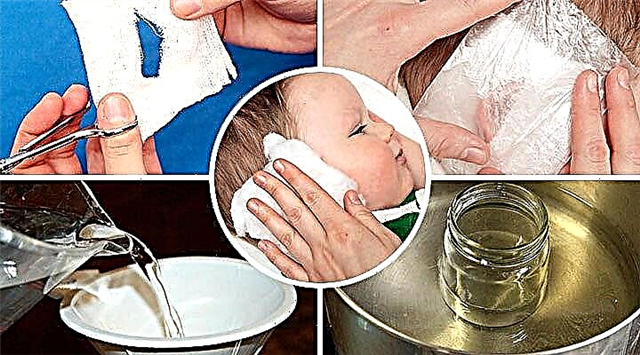Pain is an unpleasant sensory experience that occurs when cartilage and soft tissue is damaged. The activation of the receptors of the peripheral nervous system occurs due to the impact of painful stimuli. If the nose hurts inside when pressed, this indicates that the nasopharynx has been damaged by a traumatic, infectious, neurological or allergic nature.
It is possible to stop the discomfort inside the nose only after finding out the causes of the pain. In most cases, discomfort is due to inflammation of the nasal mucosa and sinuses. To eliminate the symptoms of respiratory diseases, anti-edematous, wound-healing, antiseptic and anti-inflammatory drugs are usually used.
Causes
The cause of discomfort in the nose when pressed can be trauma, allergies, neurological pathology, or infectious inflammation of the epithelial and cartilaginous structures in the nasopharynx. Conventionally, all causes of pain in the nasal cavity can be divided into two categories:
- internal - neuritis, fractures, inflammation;
- external - burns, frostbite, bruises, boils.
According to practical observations, pain in the nasopharynx when palpating the wings of the nose and the bridge of the nose can cause:
Rhinitis
 Rhinitis (runny nose) is an acute or sluggish inflammation of the nasopharyngeal mucosa caused by infectious or allergic agents. Hypothermia, gassed air, hormonal and vasoconstrictor drugs, etc. can provoke diseases. In the acute course of the common cold, foci of inflammation form in the mucous membrane, due to which the nasopharynx swells. Pressure on the tip and wings of the nose can cause discomfort in the turbinate and maxillary sinuses.
Rhinitis (runny nose) is an acute or sluggish inflammation of the nasopharyngeal mucosa caused by infectious or allergic agents. Hypothermia, gassed air, hormonal and vasoconstrictor drugs, etc. can provoke diseases. In the acute course of the common cold, foci of inflammation form in the mucous membrane, due to which the nasopharynx swells. Pressure on the tip and wings of the nose can cause discomfort in the turbinate and maxillary sinuses.
A chronic rhinitis can trigger the development of sinusitis, which causes inflammation in one or more of the paranasal sinuses.
To eliminate pain inside the nasopharynx, it is necessary to reduce inflammation in the mucous membrane and restore the outflow of viscous secretions from the nasal passages and paranasal sinuses. As a rule, nasal drops of antiseptic and vasoconstrictor action are used for this. Inadequate treatment leads to the development of atrophic or hypertrophic rhinitis, in which discomfort in the nose appears even without physical pressure on the wings of the nose or the bridge of the nose.
Sinusitis
Sinusitis is an inflammation of one or more paranasal sinuses. In most cases, the disease develops against the background of an infectious rhinitis, allergic rhinitis and colds. Pathogenic microbes and viruses act as provocateurs of pathological changes in tissues.
Late treatment of sinusitis is fraught with the involvement of all paranasal sinuses in the inflammatory process and, as a result, the development of pansinusitis.
The main sign of the development of sinusitis is pain, which, when pressed on the tip of the nose, can radiate to the bridge of the nose, the orbital region of the face, the back of the head, etc. The clinical manifestations of sinusitis depend on the location of the lesions. With sinusitis, discomfort occurs at the level of the wings of the nose on the right and left sides, with frontitis - in the bridge of the nose, with ethmoiditis - under the eyes, with sphenoiditis - inside the skull at the level of the nasal septum.
Herpes
Quite often, pain in the nose occurs due to the development of herpes in the mucous membrane of the nasopharynx. As a rule, herpetic vesicles form on the inner surface of the nasal canals, therefore, when pressing on the wings of the nose, burning, itching and painful sensations occur. The disease manifests itself in the case of a sharp decrease in the body's immune defense, therefore, the most likely causes of the formation of a rash in the nose include:
- hypothermia;
- hypovitaminosis;
- exacerbation of chronic diseases;
- iron deficiency anemia;
- injury to the nasal mucosa.
Untimely relief of inflammatory processes is fraught with the spread of infection to the conjunctiva of the eyes.
 No specific treatment for herpes infection is required. To eliminate the undesirable manifestations of the disease, it is enough to treat the inner surface of the nasal passages with zinc or tetracycline ointment.
No specific treatment for herpes infection is required. To eliminate the undesirable manifestations of the disease, it is enough to treat the inner surface of the nasal passages with zinc or tetracycline ointment.
Neurological diseases
A rather rare cause of pain inside the nasal cavity is neurological disorders. Inflammation of individual nerves (neuritis) and nerve nodes (ganglionitis) is accompanied by paroxysmal pains that can bother the patient for several minutes to a day. The nature of the uncomfortable sensations depends on the location of the foci of inflammation. With neuritis, pain can radiate to:
- eye area;
- brows; the bridge of the nose;
- the back of the head;
- gum;
- temple;
- forearm.
It is impossible to warm up the nose in the event of neuritis, because it will only increase the pain.
Antiepileptic drugs form the basis of neuritis treatment. In case of ineffectiveness of drugs, so-called intraosseous blockages are used. In the most severe cases, surgeons remove the nerves, but this can lead to changes in facial expressions and other side effects.
Other inflammatory processes
There are many causes of pain inside the nasal cavity, but most of them are associated with inflammation of the soft tissues. Often, discomfort in the nose appears due to the development of furunculosis or streptoderma. Ulcers (boils) are caused by inflammation of the hair follicles in the nasal passages. Bacteria, in particular Staphylococcus aureus, are provocateurs of undesirable processes.
In the case of the development of streptoderma in the mucous membrane of the nasopharynx, a pustule (bubble) is formed, filled with a cloudy liquid. Over time, it bursts, which is why an open wound forms in the nasal cavity, which causes pain. It should be understood that the treatment of inflammation in the airways is the prerogative of a specialist. Inadequate and untimely drug therapy is fraught with deterioration in health and dire consequences.
Principles of therapy
 Methods for treating pain inside the nasal cavity are determined by the causes of their occurrence. In the overwhelming majority of cases, discomfort is associated with the development of respiratory infections, which are amenable to drug and physiotherapy treatment. For their treatment, otolaryngologists usually prescribe:
Methods for treating pain inside the nasal cavity are determined by the causes of their occurrence. In the overwhelming majority of cases, discomfort is associated with the development of respiratory infections, which are amenable to drug and physiotherapy treatment. For their treatment, otolaryngologists usually prescribe:
- palliative drugs - eliminate the clinical manifestations of the disease, which makes it possible to improve the patient's well-being;
- drugs of etiotropic action - directly destroy the causative agent of infection in the lesions, as a result of which the healing process is accelerated;
- physiotherapy procedures - allow you to cleanse the mucous membrane of the nose and paranasal sinuses from pathological secretions and purulent masses, thereby accelerating tissue regeneration.
To reduce the severity of inflammation in the nasopharynx, it is necessary to normalize the outflow of mucus. For this, anti-edematous and anti-inflammatory drugs are usually used. They normalize the patency of the nasal canals, thereby increasing the outflow of viscous secretions from the nasal cavity and paranasal sinuses.
Before using drugs of etiotropic action, you must definitely determine the causative agent of the infection. The viral flora can be destroyed by taking antiviral drugs, and the microbial flora by antibiotics.To prevent recurrence of inflammation in the upper respiratory system, it is advisable to take vitamin-mineral complexes - "Undevit", "Pikovit", "Supradin", "Alphabet", etc.
Review of pharmacy products
You can cope with pain inside the nose with the help of antiseptic, analgesic and anti-inflammatory drugs. If the treatment regimen is correctly drawn up, undesirable manifestations of the disease can be stopped within 5-10 days. Usually, medications are used to treat sinusitis, infectious rhinitis, influenza and other respiratory pathologies, the effect of which can be found in the table:
| Drug type | Drug name | Mechanism of action |
|---|---|---|
| antibiotics | "Amoxiclav" "Erythromycin" "Ceftriaxone" | relieve purulent inflammation, reduce the severity of pain in the nasopharynx |
| mucolytics | "Mukodin" "Sinupret" "Fluimucil" | reduce the viscosity of secretions in the nose and accelerate its excretion from the respiratory tract |
| antivirus tools | Relenza Tamiflu Lavomax | destroy the viral flora in the foci of inflammation, increase local immunity |
| corticosteroids | "Beconase" "Nazarel" "Fliksonase" | relieve inflammation and reduce swelling of the nasopharyngeal mucosa |
| vasoconstrictor drops and sprays | "Tizin" "Knoxprey" "Galazolin" | increase the lumen of the airways, which helps to facilitate nasal breathing |
| analgesics | "Adjikold" "Lupocet" "Tylenol" | inhibit the activity of pain centers in the brain and block the work of nociceptors (pain receptors) in the nasal cavity |
| antipyretics | Aspirin Nurofen Paracetamol | eliminate the manifestations of a febrile state - fever, chills, increased sweating |
| preparations for inhalation | "Lazolvan" "Furacilin" "Chlorophyllipt" | relieve inflammation and normalize the outflow of mucus from the paranasal sinuses |
| solutions for rinsing the nose | Humer Chlorhexidine Quicks | flush pathogens from the nasopharynx and accelerate the restoration of tissue integrity |
Important! An overdose of antibiotics, corticosteroids and vasoconstrictors is fraught with the development of drug-induced rhinitis and dysbiosis.
Physiotherapy procedures
 Physiotherapy is one of the most effective methods of eliminating pain in the nasal cavity. During the period of exacerbation of inflammatory processes in the nasal mucosa, the following types of hardware treatment can be used:
Physiotherapy is one of the most effective methods of eliminating pain in the nasal cavity. During the period of exacerbation of inflammatory processes in the nasal mucosa, the following types of hardware treatment can be used:
- electrophoresis - the introduction of drugs into the upper respiratory tract by means of electric fields; promotes regression of inflammation and restoration of the integrity of the nasal mucosa;
- phonophoresis - the introduction of antiseptic and anti-inflammatory solutions into the nasopharynx by means of ultrasound radiation; promotes deep penetration of drugs into the foci of inflammation, thereby accelerating the healing process;
- amplipulse therapy is the effect on the tissues of the nasopharynx with low-frequency pulsed currents, which can reduce the severity of pain in the areas of inflammation.
To improve the microcirculation of blood in the paranasal sinuses, it is recommended to perform breathing exercises. To do this, it is necessary to alternately breathe either the left or the right nostril for 5-10 minutes at least 3 times a day. Exercise allows you to increase the flow of oxygen and nutrients to the affected tissues, due to which regeneration processes in the nasopharyngeal mucosa are accelerated.
Conclusion
If, on palpation of the nasal septum and nose bridge, pain occurs inside the nasopharynx, this may indicate the development of pathological processes. This can be due to infection, allergic reaction, or neurological disorders. If unpleasant symptoms appear, it is necessary to be examined by a doctor who will help determine the cause of inflammation of the ENT organs and draw up an adequate treatment regimen.
As a rule, discomfort in the nose appears against the background of the development of respiratory infections - flu, sinusitis, tonsillitis, colds, etc. To eliminate inflammation and infection in the respiratory tract, it is necessary to use antibacterial or antiviral drugs, as well as symptomatic agents - decongestants, wound healing, analgesics, etc. Timely treatment of ENT diseases prevents the spread of infection and the development of complications.



